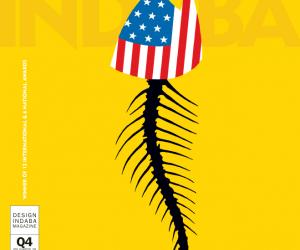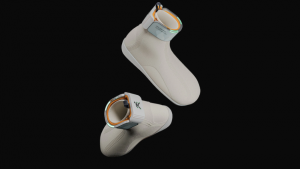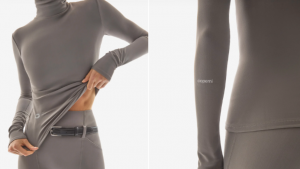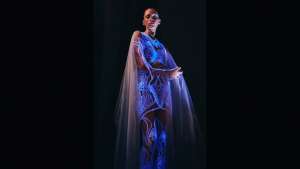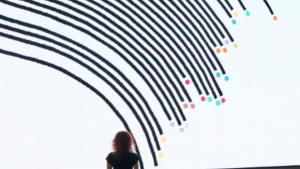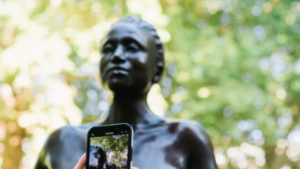First Published in
What do you find when you look up “hatmaker” in the Time magazine Luxury Index? Albertus Quartus Swanepoel. Born, bred and educated in South Africa, the milliner has been accentuating collections by the likes of Proenza Schouler and Marc Jacobs, from his New York studio for some years.
Now he has been selected as one of the 10 finalists in the 2008 Vogue/Council of Fashion Designers of America Fashion Fund competition, which provides financial support and business mentorship for emerging designers. Since its inception in 2003, the programme has launched the likes of Phillip Lim and Rodarte into the fast lane. Design Indaba magazine speaks to a designer on the eve of his success.
Design Indaba: You studied and initially worked in South Africa as a fashion designer. What led you to New York?
Albertus Swanepoel: A vacation led me here and by chance, on the third day, I met a South African – Maurice Rahmani – who had a design business here and offered me a job. My dream at that stage was to go work in Paris, but this seemed too good to be true.
Was it difficult to adjust from Pretoria to the New York pace and fashion industry? How did you get to where you are today?
Yes, it was very difficult and something I would never do again given the choice! Mostly it was an inner struggle being here, dealing with a very different culture and mentality; but work-wise too, it is another planet. South Africa is so isolated, so unless you travel (which I had not done at that point), one thinks SA is on par with the rest of the world in quality and professionalism. I quickly realised that I knew very little and was up against the rest of the world here. Nonetheless, I always loved the city, even in hard times – the energy, the diversity and the sophistication – so that made me persevere here. I did not come here for my career per se... more for the life experience, but life had other plans I guess!
What motivated you to pursue hat design?
It was a matter of survival at first. My ex-wife and I had a glove business, and for us to have sales for summer, I decided to study millinery. Having a clothing collection here is an enormous expense and I did not have those funds. One can start smaller in accessories.
What are the factors that go into successful hat design and what sort of thought process do you follow when you start working on a new design?
A good hat, I think, depends on line and proportion. The rest is decorative. Having a graphic design background helped my eye tremendously in designing – it is important to know all the rules, but also how to break them. I do follow fashion trends but sometimes it’s just a cool girl on the street, the opera or a vintage doodad that inspires me. I like mixing haute with cheap, modern with vintage and generally trying to have fun with it.
You have created hats for collections such as Marc by Marc Jacobs, Ralph Lauren, Donna Karan, Oscar de la Renta, Carolina Herrera, Vera Wang, Proenza Schouler, Jennifer Lopez, Betsey Johnson, Peter Som and Thakoon. What an impressive list! How do these collaborations work?
The collaborations work differently with every designer. Some give me a very strict brief – I am then like a draper, creating the shape for them. Others give me a vintage hat to copy or be inspired by and some give me a general idea of the look for the season and I then make prototypes until we are both happy. It is technically challenging sometimes, since designers don’t understand the process or limitations. Also, because there is no legacy of millinery here, I have to do a lot of research to realise some items.
Which collaborations and works are you most satisfied with?
As they say: “One is only as good as your last hat.” Another favourite: “Happiness is a shortcut to mediocrity.” I am very critical of my work. That said, I liked the Proenza Schouler military caps that I made for the Spring/Summer 2008 collection and a hat I made for Maggie Norris Couture, which took 55 hours.
You also have your own independent male and female collections available at Paul Smith, Bergdorf Goodman, Odin, Barneys, Louis Boston, American Rag (Japan) and En Suite (Russia). What informs the aesthetics and techniques involved in the Albertus Quartus label?
My hats have lots of handwork and astute attention to detail. It’s for a customer that appreciates that kind of craftmanship. My fedoras are pretty distinctive in style, and there are also elements of my work inspired by South Africa. It is a long process to build a brand, so with every collection there are leitmotifs in my work. My shapes, although based on traditional millinery silhouettes, are all modern and alluring.
What is the function of hats as a fashion accessory today? It does seem to suffer from disregard compared to past centuries. Is a comeback imminent?
Sadly, I don’t think hat wearing will be like in the 1930s or 1940s again. And, maybe that’s a good thing – everyone toting the season’s “it” bag or shoe becomes really boring. A hat is what makes clothes fashion – to quote the great milliner Stephen Jones. It gives one instant attitude or character. It is a form of protection, but has mostly decorative qualities. Christian Lacroix once stated it perfectly: “The hat is the dot on the i.”
You name “pondering the sartorial dysfunction on Times Square” as one of your hobbies. Please share some of your ruminations.
Mostly tourists visit the Times Square area (we as New Yorkers try to avoid it at all costs). In the event of passing through, it is astounding what people consider fashionable (if one follows fashion), appropriate or fabulous. Never judge a book by its cover, I’ve learned though. I just find it pretty fascinating how comfortable some people are with their body shapes, or how confident others are in thinking that they pull off a certain outfit.
You have been included as one of the 10 finalists in the 2008 Vogue/CFDA Fashion Fund competition. What does being a finalist mean to you?
It has been a very long and winding road to get where I am today, which makes being a finalist for me very gratifying. It is a huge validation of one’s work and being a very prestigious competition (judges include Anna Wintour, Reed Krakoff and Diane von Furstenberg), an honour to be part of. I’ve already had great business opportunities offered to me and press one cannot pay for in real life. (For example, we are each getting a two-page spread in the November Vogue, which would cost hundreds of thousands of dollars to buy.) I’m really humbled and very lucky to have been chosen. As one of the judges said to me, I am now in the Vogue fraternity club, which is the best kind of membership one can dream to have.



